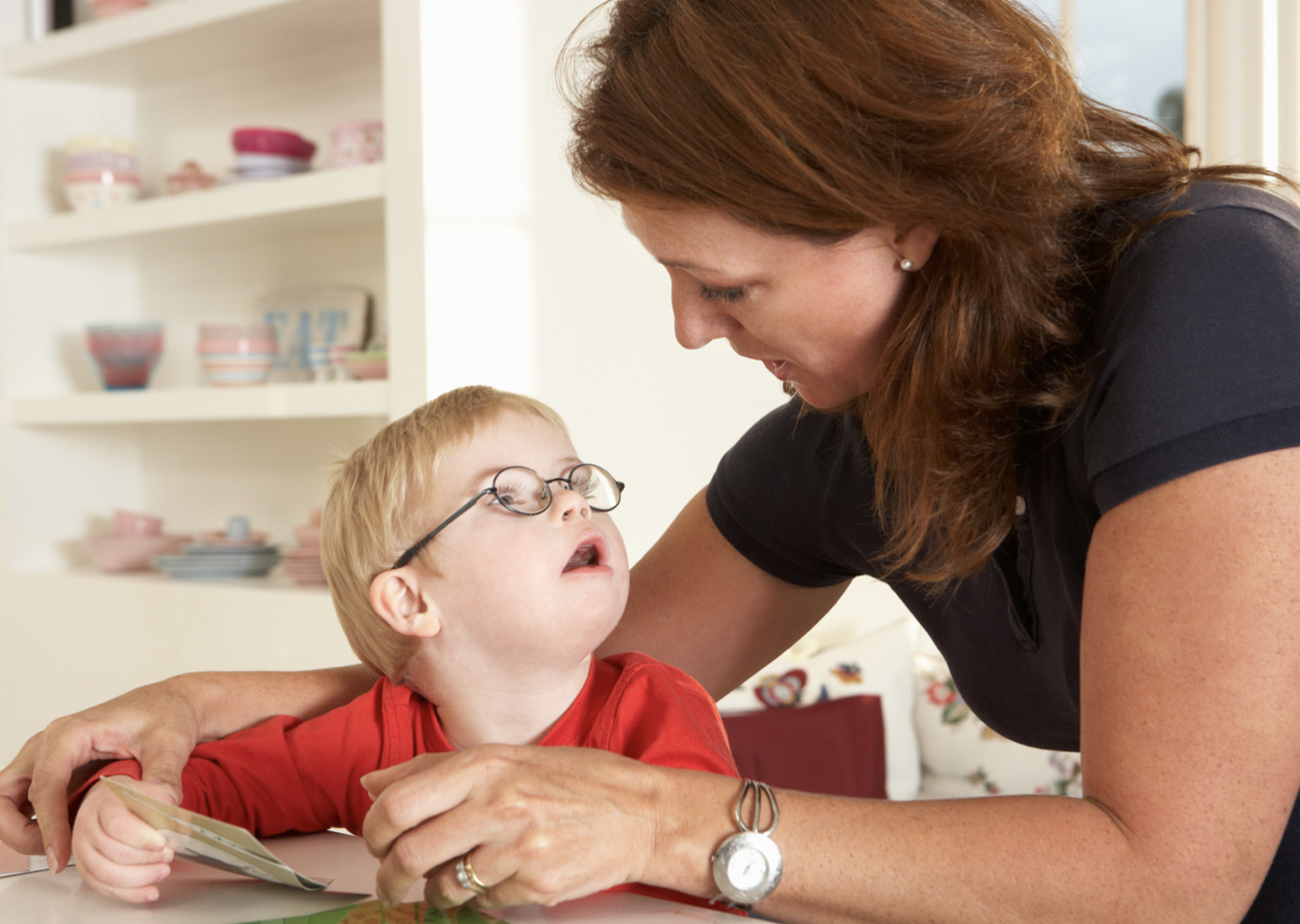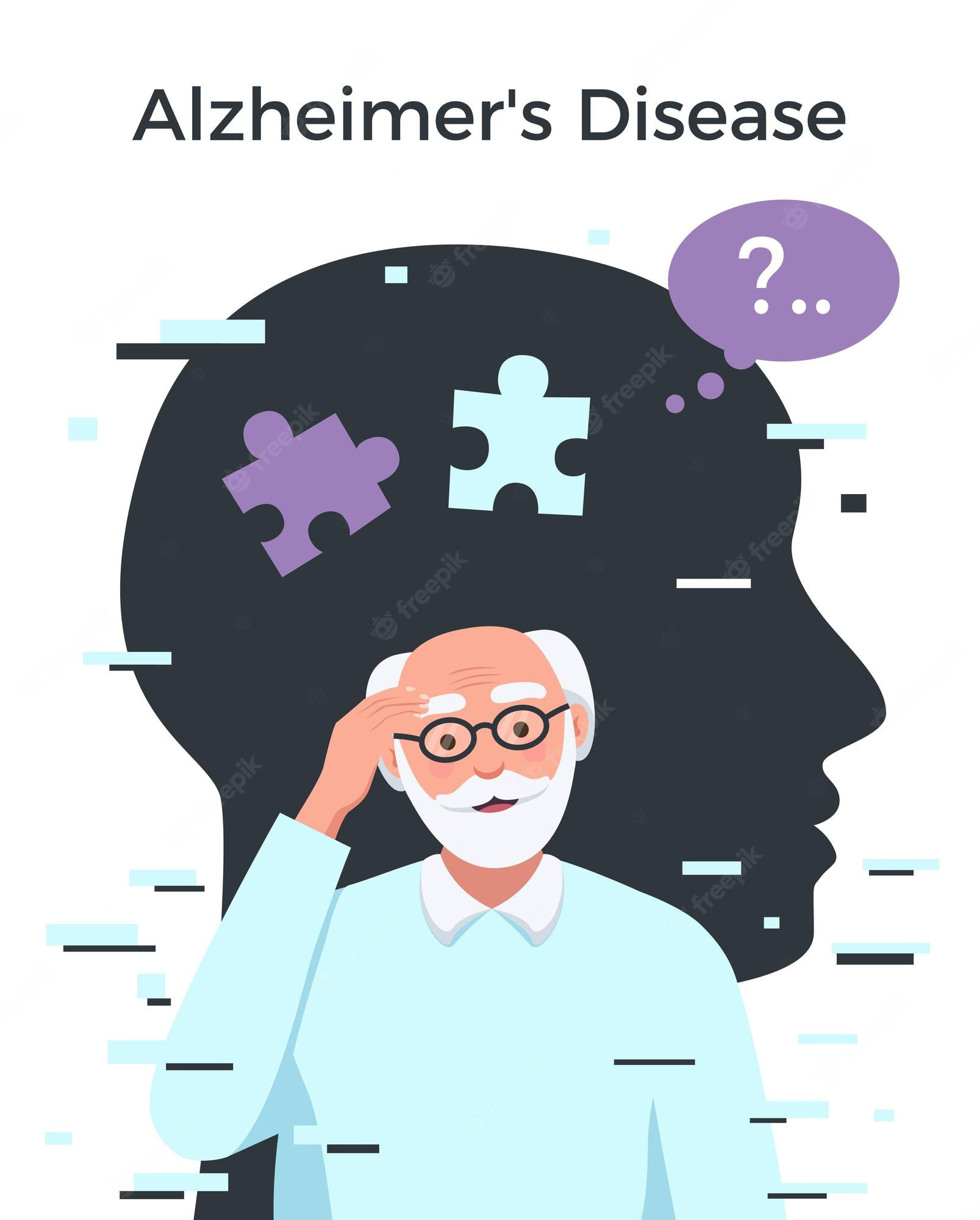Definisi
Disabilitas intelektual, atau dulu disebut retardasi mental, adalah keterbatasan intelektual, keterampilan, dan perilaku adaptif untuk menjalani kehidupan sehari-hari. Kemampuan mental atau intelegensia mereka ditemukan di bawah rata-rata. Seseorang dengan disabilitas intelektula dapat mempelajari pengetahuan atau keterampilan baru, namun membutuhkan waktu lebih banyak dibandingkan orang lain. Derajat beratnya disabilitas intelektual dibagi menjadi ringan, sedang, berat, dan sangat berat.
Seseorang dengan disabilitas intelektual mengalami hambatan dalam 2 area, yaitu:
- Fungsi intelektual, diukur sebagai intellectual quotient (IQ), yang merujuk pada kemampuan seseorang untuk belajar, melakukan reasoning, mengambil keputusan, dan memecahkan masalah
- Perilaku adaptif, yaitu kemampuan untuk melakukan aktivitas sehari-hari, berkomunikasi efektif, berinteraksi dengan orang lain, dan mengurus diri sendiri.
IQ dilambangkan dengan angka dan diukur dengan tes IQ. Rata-rata manusia memiliki IQ 100 (85-115). Seseorang dikatakan mengalami disabilitas intelektual jika memiliki IQ di bawah 70–75.
Untuk mengukur perilaku adaptif anak, ahli jiwa akan melakukan perbandingan perilaku anak dengan teman seusianya. Hal yang diobservasi adalah keterampilan mengurus diri (makan sendiri, menggunakan pakaian), cara komunikasi, dan interaksi dengan orang sekitarnya.
Disabilitas intelektual dialami oleh 1% populasi. Sekitar 85% dari penyandang disabilitas intelektual mengalami disabilitas ringan, yang berarti mereka hanya membutuhkan waktu lebih lama dibandingkan populasi normal untuk mempelajari informasi baru atau belajar keterampilan baru. Dengan dukungan yang tepat, anak tetap bisa hidup secara independen.
Penyebab
Kondisi ini berhubungan dengan gangguan perkembangan otak, namun penyebab pasti dari disabilitas intelektual berbeda-beda pada setiap orang. Disabilitas intelektual dapat disebabkan oleh faktor prenatal (masa kehamilan), perinatal (saat persalinan), dan postnatal (setelah kelahiran). Penyebab tersering dari disabilitas intelektual adalah faktor genetik, sekitar 45% dari seluruh kasus.
Penyebab prenatal
- Sindrom genetik seperti Sindrom Down, Fragile X syndrome
- Inborn errors of metabolism
- Gangguan pembentukan otak otak seperti mikrosefali (ukuran kepala bayi lebih kecil dari normal)
- Kondisi medis yang diderita ibu, misalnya ibu kurang gizi, sering merokok, preeklampsia
- Faktor lingkungan seperti alkohol, obat-obatan, toksin, dan teratogen
Penyebab perinatal
- Komplikasi saat persalinan atau anoksia (kadar oksigen tubuh sangat rendah) saat lahir
- Usia kelahiran bayi prematur sehingga paru-parunya belum matang sempurna dan membuat bayi kekurangan oksigen saat lahir
Penyebab postnatal
- Kondisi medis yang menyebabkan hipoksemia (penurunan kadar oksigen dalam darah)
- Trauma kepala
- Infeksi
- Kejang berulang
- Malnutrisi berat
- Intoksikasi zat beracun (seperti timbal atau merkuri)
Faktor Risiko
Beberapa faktor risiko yang berhubungan dengan disabilitas intelektual antara lain:
- Infeksi yang terjadi sebelum atau setelah lahir, seperti infeksi CMV atau rubella saat kehamilan
- Memiliki riwayat keluarga dengan kelainan kromosom seperti sindrom Down
- Faktor metabolik seperti penyakit phenylketonuria, dimana tubuh tidak dapat mengubah salah satu jenis asam amino dalam protein
- Faktor nutrisi (malnutrisi)
- Mengalami trauma fisik sebelum atau setelah lahir
Lingkungan berfungsi sebagai penyedia kebutuhan dasar anak untuk tumbuh kembang. Yang dimaksud dengan lingkungan pada anak dalam konteks tumbuh kembang adalah suasana dimana anak tersebut berada. Kebutuhan dasar anak untuk tumbuh kembang dibagi menjadi 3 bagian yaitu:
- Kebutuhan fisik-biologis (ASUH) seperti pangan untuk memenuhi gizi, perawatan kesehatan (imunisasi, ASI, pengobatan sederhana), kebersihan dan sanitasi, bermain serta aktivitas fisik
- Kebutuhan kasih sayang dan emosi (ASIH), anak memerlukan kasih sayang melalui hubungan yang erat dan serasi dengan ibunya, kasih sayang akan sangat membantu tumbuh kembang fisik-mental dan psikososial yang optimal
- Kebutuhan stimulasi (ASAH). Untuk memperoleh perkembangan yang optimal, anak perlu 'diasah' melalui kegiatan stimulasi dini untuk mengembangkan kemampuan sensorik, motorik, emosi-sosial, bicara, kognitif, dan lain sebagainya.
Oleh karena itu selain faktor-faktor di atas, adanya gangguan dalam lingkungan rumah dan keluarga dapat menjadi penyebab timbulnya retardasi mental tipe sosio-kultural (retardasi mental tipe ringan).
Gejala
Umumnya, semakin berat disabilitas intelektual yang dialami, semakin cepat gejala-gejala dapat diamati. Beberapa gejala tersebut antara lain:
- Tengkurap, merangkak, berjalan lebih lambat dibandingkan teman seusianya (keterlambatan motorik)
- Terlambat bicara atau mengalami kesulitan untuk bicara (keterlambatan bahasa)
- Lamban dalam mempelajari hal sederhana seperti berpakaian, membersihkan diri dan makan
- Sulit mengingat informasi
- Sulit mengadopsi aturan sosial
- Sulit melihat konsekuensi dari suatu perilaku
- Sulit memecahkan masalah
- Sulit beradaptasi dengan lingkungan baru
- Terlibat dalam berbagai konflik dengan teman atau keluarga
- Tidak tertarik dengan hal baru
Anak dengan retardasi mental berat biasanya akan disertai dengan masalah kesehatan lainnya seperti kejang, gangguan mood (kecemasan dan autisme), kelainan motorik, gangguan penglihatan atau gangguan pendengaran.
Diagnosis
Berdasarkan Pedoman Penggolongan dan Diagnosis Gangguan Jiwa III (PPDGJ III), disabilitas intelektual didiagnosis berdasarkan tingkat kecerdasan (intelegensia), temuan klinis, perilaku adaptif, dan hasil psikometrik. Berdasarkan Diagnostic and Statistical Manual of Mental Disorder, Fifth Edition (DSM-V), diagnosis ini harus ditetapkan sebelum anak berusia 18 tahun. Diagnosis pasti dari disabilitas intelektual harus meliputi seluruh kemampuan (global ability) sehingga menimbulkan hambatan dalam keterampilan.
PPDGJ III juga menentukan luasnya hendaya yang dialami oleh anak dengan retardasi mental dan menggolongkan disabilitas intelektual berdasarkan tes IQ, yaitu:
Retardasi mental ringan
Pada kondisi ini anak anak mengalami gangguan berbahasa tetapi masih mampu menguasainya untuk keperluan bicara sehari-hari. Umumnya, mereka juga mampu mengurus diri sendiri secara independent/mandiri (makan, mencuci, memakai baju, mengontrol saluran cerna dan kandung kemih), meskipun tingkat perkembangannya sedikit lebih lambat dibandingkan orang normal. Kesulitan utama pada retardasi mental ringan yaitu pada pekerjaan akademik sekolah dan banyak yang bermasalah dalam membaca dan menulis. IQ anak berkisar antara 50–69 (85% kasus).
Retardasi mental sedang
Anak mengalami keterlambatan perkembangan pemahaman dan penggunaan bahasa. Kemampuan mengurus diri sendiri dan keterampilan motorik juga mengalami keterlambatan dan beberapa diantaranya membutuhkan pengawasan seumur hidup. IQ anak berkisar antara 35–49 (10% kasus).
Retardasi mental berat
Pada retardasi mental berat, anak mengalami gangguan perkembangan motorik yang bermakna dan adanya defisit neurologis (penurunan fungsi saraf). IQ anak berkisar antara 20–34 (4% kasus).
Retardasi mental sangat berat
Anak memiliki kemampuan yang sangat terbatas dalam mengerti dan menuruti permintaan dan instruksi/perintah. Umumnya anak sangat terbatas dalam mobilitas. IQ anak kurang dari 20 (1% kasus).
Pemeriksaan untuk mendiagnosis disabilitas intelektual memerlukan pemeriksaan tambahan untuk mengeksklusi penyebab organik atau struktural lainnya. Pemeriksaan tersebut antara lain dengan analisis kromosom, pemeriksaan urin, pemeriksaan darah, dan pencitraan kepala (neuroimaging). Analisis kromosom biasanya dilakukan pada masa kehamilan. Pemeriksaan urin dan darah berfungsi untuk mengevaluasi aktivitas enzim dan mendeteksi inborn error of metabolism seperti PKU, galaktosemia, dan lain-lain. Sedangkan pemeriksaan CT scan atau MRI berfungsi untuk melihat adanya mikrosefali dan palsi serebral.
Tata Laksana
Penanganan disabilitas intelektual harus dimulai sedini mungkin setelah diagnosis ditetapkan untuk mencegah perburukan dan mengontrol gejala disabilitas yang timbul.
Tips untuk orang tua
- Cari bantuan dan informasi yang akurat mengenai kondisi disabilitas anak
- Bergabung dengan komunitas orang tua dari anak dengan disabilitas intelektual
- Bersabar ketika mengajari anak informasi atau keterampilan baru, karena anak membutuhkan waktu sedikit lebih banyak untuk mempelajari hal baru
- Tetap menerapkan kemandirian dan tanggung jawab pada anak
- Lakukan kegiatan berkelompok dengan anak lain, seperti kelas seni, untuk mengajarkan keterampilan bersosialisasi
Komplikasi
Luaran dari disabilitas intelektual bergantung pada beratnya derajat disabilitas, kondisi medis lainnya, dan kepatuhan terapi. Anak dengan disabilitas intelektual dapat tetap produktif dan hidup secara independen. Dukungan orang tua dan kepatuhan terapi sangat mempengaruhi hal tersebut.
- Dukungan edukasi. Tenaga kesehatan akan melakukan pertemuan dengan keluarga dan sekolah untuk membuat rencana pendidikan sesuai dengan kondisi anak. Dengan rencana yang personal, anak dapat tetap belajar dengan pace-nya sendiri. Titik berat keterampilan ini adalah pada kemampuan komunikasi, vokasional, sosial, mengurus diri sendiri, dan perilaku adaptif.
- Intervensi perilaku. Intervensi perilaku berfungis untuk mengajarkan anak mengenai kebiasaan-kebiasaan yang baik dan meninggalkan kebiasaan yang kurang baik.
- Latihan vokasional. Hal ini dapat membantu remaja dengan disabilitas intelektual agar memiliki keterampilan yang dibutuhkan untuk mencari pekerjaan. Pada latihan vokasional, anak akan disupervisi oleh tim multidisiplin yang terdiri atas pekerja sosial, terapis, guru, konselor, dan psikolog.
- Psikofamaka. Obat-obatan bukan komponen utama dalam pengobatan disabilitas intelektual, namun dapat membantu mengatasi kondisi komorbid. Perilaku agresif sering muncul pada anak dengan disabilitas intelektual, sehingga obat-obatan seperti antipsikotik dapat membantu mengontrol perilaku tersebut.
- Terapi kondisi medis lain seperti gangguan pemusatan perhatian dan depresi.
Pencegahan
Beberapa penyebab dari disabilitas intelektual dapat dicegah, seperti fetal alcohol syndrome, yaitu dengan tidak mengonsumsi alkohol selama hamil. Pemeriksaan kehamilan yang rutin dan baik, konsumsi vitamin prenatal, dan mendapatkan vaksin untuk infeksi tertentu dapat menurunkan risiko anak lahir dengan disabilitas intelektual.
Penyebab lain dari disabilitas intelektual adalah genetik. Jika Anda memiliki riwayat keluarga dengan disabilitas intelektual, Anda dapat melakukan konseling genetik sebelum memiliki anak.
Pemeriksaan tertentu seperti USG kehamilan dan amniosentesis dapat dilakukan selama kehamilan untuk menemukan masalah yang berkaitan dengan disabilitas intelektual. Namun, sekalipun diketahui, beberapa penyebab ini tidak dapat diatasi semata-mata.
Kapan harus ke dokter?
Jika Anda menduga anak Anda mengalami disabilitas intelektual, mengamati adanya keterlambatan perkembangan, atau kondisi medis lainnya, langkah pertama yang dapat Anda lakukan adalah bicara pada tenaga ahli profesional. Dokter ahli jiwa akan melakukan pemeriksaan secara menyeluruh untuk mendiagnosis kondisi tersebut. Deteksi dan penanganan dini dapat membantu mencegah progresi kondisi. Dengan itu, Anda dapat membantu anak Anda meraih potensinya.
- dr Anita Larasati Priyono
Byrd, F. (2020). Intellectual Disability in Children. [online] WebMD. Available at: https://www.webmd.com/parenting/baby/child-intellectual-disability.
Republic of Indonesia Ministry of Health. Guidelines for the Classification and Diagnosis of Mental Disorders in Indonesia III. Ith Edition. Jakarta: Department of Health.
CDC (2019). Facts About Intellectual Disability. [online] Centers for Disease Control and Prevention. Available at: https://www.cdc.gov/ncbddd/childdevelopment/facts-about-intellectual-disability.html.
American Speech-Language-Hearing Association. (n.d.). Intellectual Disability. [online] Available at: https://www.asha.org/practice-portal/clinical-topics/intellectual-disability/#collapse_8 [Accessed 2 Feb. 2024].
Medlineplus.gov. (2013). Intellectual disability: MedlinePlus Medical Encyclopedia. [online] Available at: https://medlineplus.gov/ency/article/001523.htm.
Lee, K., Cascella, M. and Marwaha, R. (2020). Intellectual Disability. [online] PubMed. Available at: https://www.ncbi.nlm.nih.gov/books/NBK547654/.









